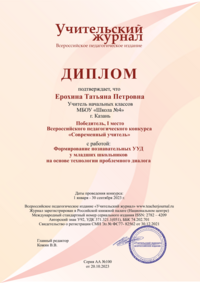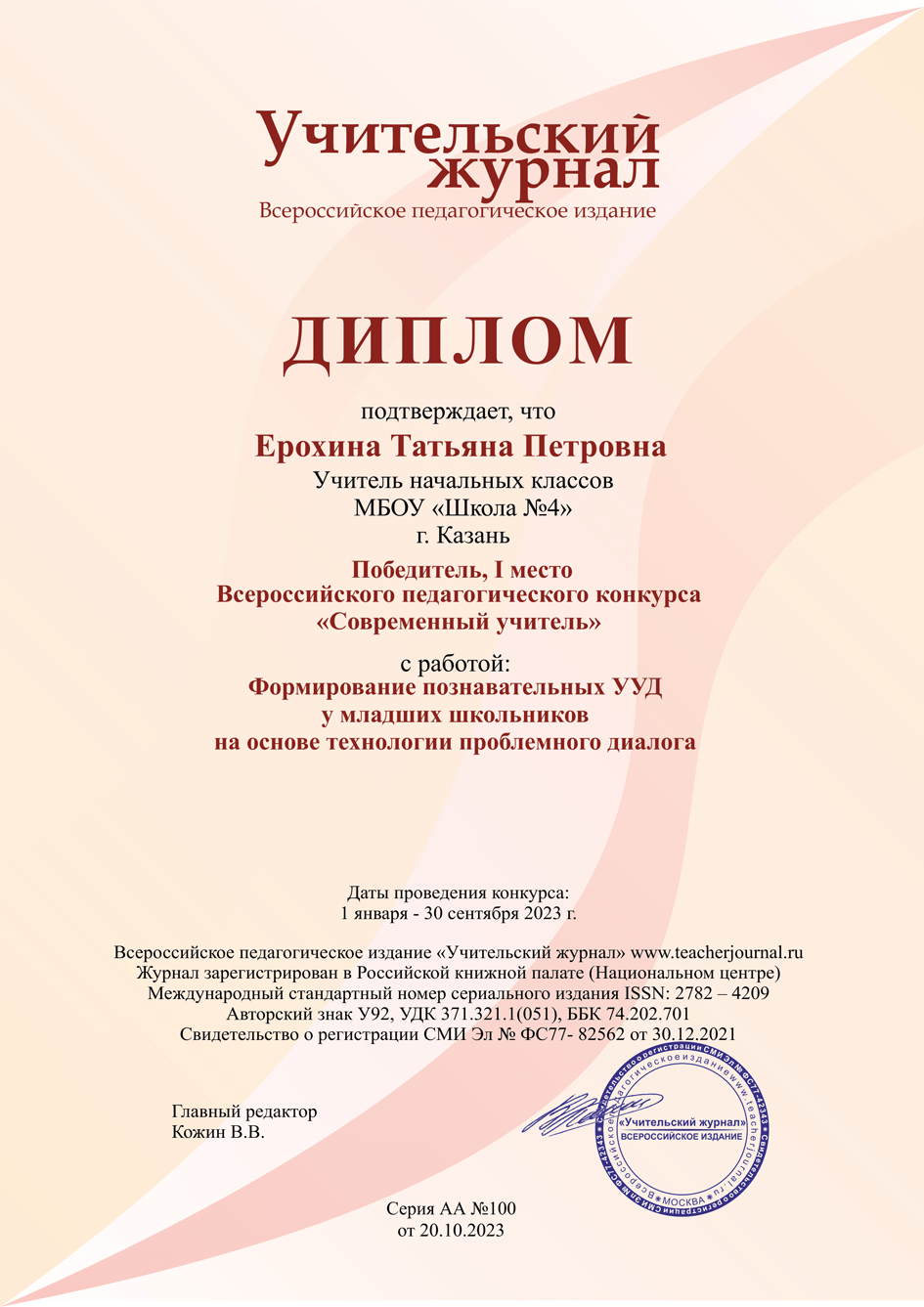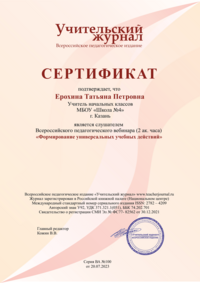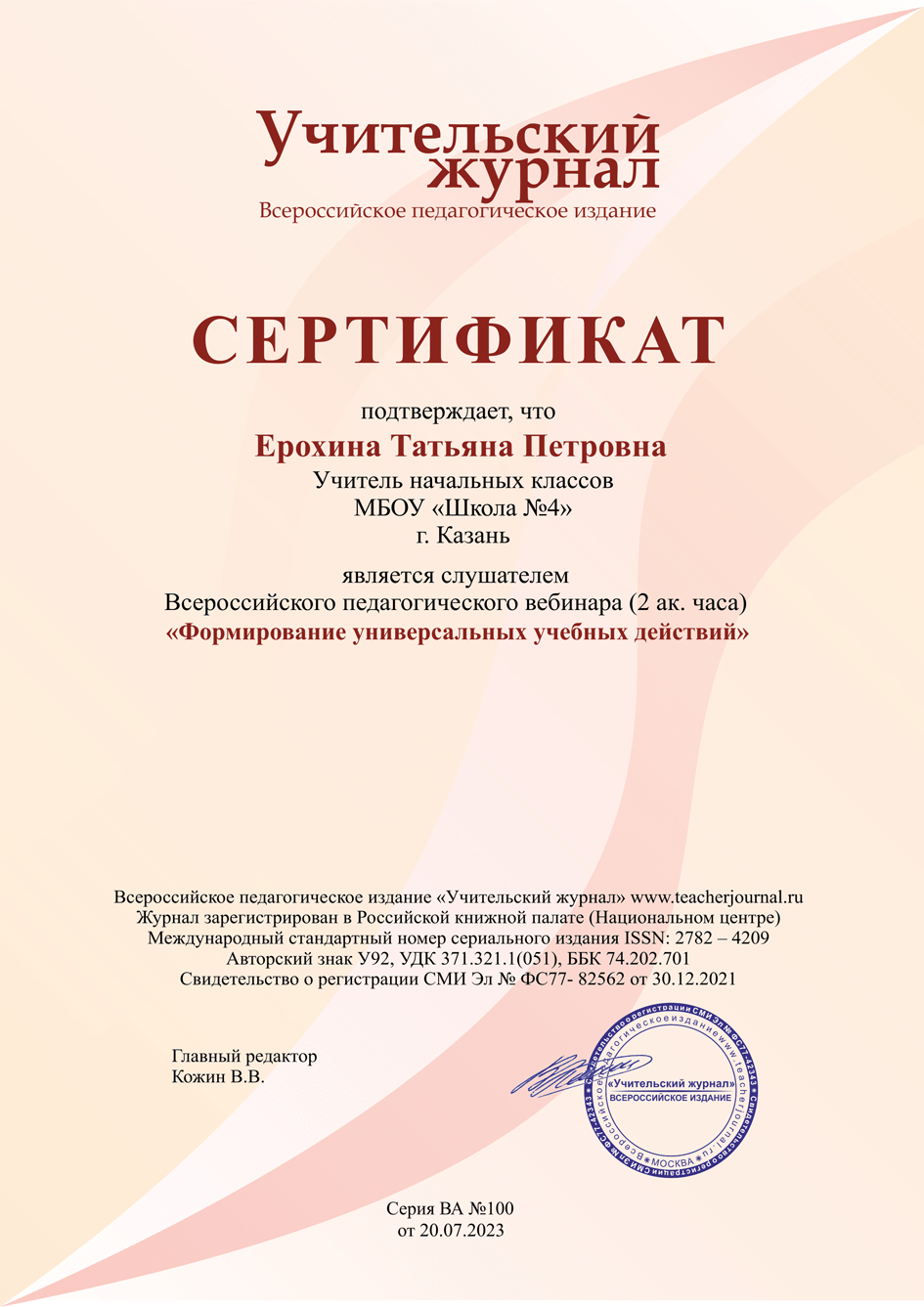Методическая разработка внеклассного занятия по английскому языку по теме «Are Stereotypes Harmful?»
Автор: Коренькова Наталья Васильевна
Организация: МБОУ СОШ № 1 с углублённым изучением отдельных предметов
Населенный пункт: Владимирская область, г. Александров
Аннотация
Методическая разработка представлена в форме сценария внеклассного занятия, предназначена для учителей английского языка и рекомендована учащимся 8-9 классов.
Данное внеклассное занятие было проведено в форме дискуссии (внеклассное обсуждение) с учащимися 8 класса. Тема занятия выбрана неслучайно. Как классному руководителю мне часто приходится разрешать проблемы, возникающие в детском коллективе. В моём арсенале методов и приёмов не последнее место занимают внеклассные мероприятия, на которых я ненавязчиво предлагаю учащимся погрузиться в тему, непосредственно связанную с недавно возникшей конфликтной ситуацией в классном коллективе, чтобы помочь им осознать и понять причину конфликта и переосмыслить свою жизненную позицию. Так как я ёще и учитель английского языка, то я решаю воспитательные задачи в том числе и средствами английского языка. Это положительно влияет на мотивацию учащихся к изучению английского языка. Учащиеся обнаруживают связь языка с жизнью, что ещё больше стимулирует их непосредственный интерес. Таким образом, внеклассные занятия по английскому языку позволяют решать задачи воспитательного и образовательного плана в совокупности.
Цель: развитие коммуникативной компетенции через работу с текстом и лексическими единицами.
Задачи:
Практические:
- расширить лексический запас школьников;
- развивать аудитивные навыки и навыки активного говорения;
- продолжить формирование лексических навыков и навыков чтения с извлечением необходимой информации;
Образовательные:
-раскрыть понятие стереотипа, различать факты и стереотипы;
Развивающие:
- развивать умения анализировать, обобщать, логически мыслить, делать выводы;
Воспитательные (ориентированные на достижение личностных результатов обучения, формирование личностных УУД):
- пробудить интерес к изучаемой теме, побудить к осмыслению дилеммы стереотип – это благо или зло;
- развивать умение формулировать и обосновывать свою точку зрению;
- стимулировать интерес к изучению английского языка;
-улучшить отношения в коллективе.
Тема урока: “Are Stereotypes Harmful?”
Ключевые слова: stereotype, gender stereotypes, prejudice, discrimination, harmful.
Оснащение урока: компьютер, проектор, экран, презентация Power Point, доска, раздаточный материал для различных этапов урока.
Этап I. Организационный
T.: Hello, my dear friends! I’m glad to see you! I hope you’re fine! Today we’re having a special lesson. You will have your chance to speak and give your ideas. Please, be active and creative. Well, let’s begin.
Этап II. Актуализация знаний
T.: Look at the screen, please!
T.: You need to discuss these questions in groups of 5 (slide 2). The words and phrases in the box can help you (slide 3). Add your own ideas. Start like this:
Boys/Girls are … .
Boys/Girls always/never/often/seldom … .
Boys/Girls can/may … .
T.: I see you ‘re ready. Shall you start sharing your ideas?
(Pupils’ answers)
(Suggested answers:
1. Girls usually feel weak and helpless and need support, help and defense.
2. Girls often feel envy towards other girls.
3. Girls can’t do without boys.
4. Girls are more likely to be hurt.
5. Girls often behave very emotionally.
6. Girls can be noisy and usually speak loudly.
7. Girls can be unfair more often than boys.
8. Girls often cry.
9. Girls are good at studying.
10. Boys are more tolerant than girls.
11. A boy feels jealous more often than girls. e.g. If other boys spoke to his girlfriend he is immediately jealous.
12. Boys are strong and often can be even aggressive.
13. Boys always appreciate friendship.
14. Boys often support each other.
15. Boys often try to be helpful.
16. Boys seldom betray their close people.
17. Boys are more likely to cheat.
18. Boys are seldom unfair.
19. Boys rarely show their emotions. )
Формулирование темы урока и целеполагание:
T.: What common ideas have you named? (Pupils’ answers)
T.: Can you explain why you have the same ideas? (Pupils’ answers)
Expressing your points of view try to use these phrases (slide 4):
I think … .
In my opinion … .
It seems to me … .
As I see it … .
I believe that … .
I agree (disagree) with … .
I have a different opinion … .
(Suggested answer:
I think the same ideas came to our minds because boys/girls are commonly seen in that definite way.)
T.: Great! We have a special term for that. It is a stereotype.
T.: What influences stereotyping? (Suggested answers: culture, traditions, mass media, movies, adds, commercials.)
T.: Let’s watch a video and fill in the table, say what stereotypes of girls and of boys exist in our society.
(Gender Stereotypes - YouTube)
|
Boys |
Girls |
|
strong |
weak |
|
know everything |
less intelligent |
|
not gentle, don’t weep |
over-sensitive |
|
competitive |
not competitive |
|
don’t like publicity |
love to be the center of attention |
|
free |
less free |
We can easily notice the differences in boys’ and girls’ toys, clothes, books, men’s and women’s jobs.
T.: Well, now continue my thought, please: A definite opinion of boys and of girls is called …. (a gender stereotype).
|
Gender Stereotype |
T.: So, today we are speaking about gender stereotypes.
T.: Now I have a question to you: are stereotypes good or evil? (slide 5) Give your reasons, please. (Pupils’ answers)
T.: We have a series of lessons devoted to this theme, so we’ll try to understand it better and deeper.
T.: What should we do to answer this question properly? (slide 6) (с помощью наводящих вопросов ученики формулируют задачи урока)
Firstly: We should give a definition to stereotype.
Secondly: We should find the associations to stereotype.
Thirdly: We should distinguish facts from stereotypes.
Этап III. Усвоение новых знаний
T.: Read the text (Приложение 1) to learn about stereotypes. Find out what a stereotype is. (Pupils’ answers)
|
Stereotype |
T.: We can find the following definition to stereotype in Longman Dictionary of English Language and Culture (slide 7):
Stereotype is a fixed set of ideas about what a particular type of person or thing is like, which is (wrongly) believed to be true in all cases. (читает ученик)
T.: What problems may be caused by stereotyping? (Suggested answer: inequality between men and women.)
T.: Where does it take place? (Suggested answers: some jobs are only for men/women; some games are only for boys/girls; men’s salary is larger than women’s one for the same work; different requirements to girls/boys etc.)
T.: Reading the text you surely paid attention to other words in bold. What are they? (Prejudice and discrimination). What’s a prejudice?
|
Prejudice |
(Suggested answer: if a person believes that a stereotype is true they say that he has a prejudice.)
T.: What’s discrimination?
|
Discrimination |
(Suggested answer: it is an unfair feeling or opinion about somebody. Prejudice leads to discrimination.)
T.: So, ‘prejudice’ and ‘discrimination’ are closely connected with ‘stereotype’. It’s possible to say that prejudice and discrimination are associated with stereotype and vice verse.
Этап IV. Закрепление новых знаний
T.: Match the words with their definitions. More than one definition is possible. (slide 8)
|
1) Discrimination 2) Stereotype 3) Prejudice |
a) Unfair and often unfavorable feeling or opinion formed without thinking deeply and clearly or without enough knowledge, and sometimes resulting from fear or distrust of ideas different from one’s own. |
|
b) Treating different groups or people in different ways, especially unfairly. |
|
|
c) A firm idea about what a particular type of person or thing is like but which is often not true in reality. |
|
|
d) Dislike or distrust |
|
|
e) Treating a person or a group worse than others |
T.: Compare what the two people have said. Which of these are stereotypes and which are facts. (Приложение 2)
T.: Do you think that stereotypes change in time? (Pupils’ answers)
T.: Watch the video and say why we have gender stereotypes. Be ready to answer the questions. Why do we have gender stereotypes (youtube.com)
(Slide 9)
1. What is expected from a newborn? (certain behavior )
2. What is it based on? (socially identified gender; what the society considers as right and wrong; cultural expectation)
3. What problem is caused by gender stereotyping? (individuals become victims of the negative stereotypes of their gender group)
4. Is the gap between genders decreasing? (Yes, the differences between men and women diminish with time and advancement.)
Этап V. Контроль (slide 9)
-Give your own definitions to the following words:
Stereotype is … .
Prejudice is … .
Discrimination is … .
- Give your own examples of stereotypes.
- Are stereotypes good or evil? Prove your answer, will you?
T.: Speaking in general, stereotypes are harmful because they evoke unfair feelings and opinions of this or that person, they cause inequality between men and women and lead to discrimination.
Этап VI. Рефлексия (slide 10) What do you think about your work at the lesson? Answer using:
I’ve learnt … .
I’ve been taught … .
I’ve understood … .
I liked … .
I’ve got interested in … .
I haven’t understood … .
I couldn’t … .
Приложение 1
Read the text to learn about stereotypes. Find out what a stereotype is.
Very often we have an opinion about a person simply because that person belongs to a certain group of people: young or old, men or women, Americans or Chinese. Such opinions are called stereotypes. If you have a stereotype, you think that all people in a group think, act and look the same. But this is not true. In every group people are different. If we have stereotypes, we may treat people unfairly. For example, the young girl in the story “The Rose Pin” did not to meet her great-grandmother because she had a stereotype about old people. But after she knew her great-grandmother better, the girl changed her opinion.
If you do not like or do not trust somebody because of a stereotype, you have a prejudice against this person (a group of people). People have prejudice because of religion, race, ability, age gender or anything about a person that makes him / her different (appearance, dress, class in society). Prejudice is dangerous because it leads to discrimination.
Приложение 2
Compare what the two people have said. Which of these stereotypes and which are facts?
“A” said:
Men are stronger sex.
Women talk to express their feelings and to support their friends.
Women are good at cleaning, cooking and sewing.
Women often cry.
Traditionally, men support their families.
Women don’t usually have many friends.
The best place for a woman is at home.
“B” said:
In some ways, women are stronger. They live longer than men.
Men prefer to discuss fishing, sports and other activities.
Many men are famous as great cooks and tailors.
Women show less stress than men.
Many women now support their families.
Men like meeting and talking with lots of friends.
A woman’s role is very strong in modern society.
Литература
1. Английский язык: Английский с удовольствием /Enjoy English: Учебник для 9 кл. общеобраз. учрежд. / Биболетова М.З, Бабушис Е. Е., Кларк О.И., Морозова А.Н., Соловьёва И.Ю. - Обнинск: Титул, 2013. – 224 с.: ил.
2. Gender Stereotypes - YouTube. – [Дата обращения 22.06.24].
3. Why do we have gender stereotypes (youtube.com). – [Дата обращения 22.06.24].









